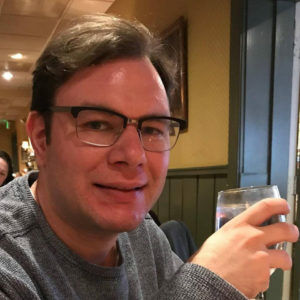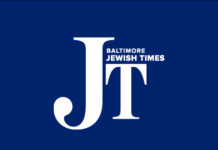
By Marc Grossblatt
My experience in the Institute for Islamic-Christian-Jewish Studies Justice Leaders Fellowship has prompted me to think deeply about economic justice issues in Baltimore and around the country. My experience has broadened my perspective to view the issue of economic justice through a series of divides.
The reading I encountered during this year’s fellowship that most influenced my thinking was “The Racial Wealth Divide in Baltimore” from the Corporation for Economic Development. This reading is from 2015-2016, so it’s a little outdated as the numbers have changed, but it provides excellent statistics on numerous topics. The three I want to focus on are “Households of Color in Liquid Asset Poverty,” “Population and Vacant Homes in a Shrinking City” and food deserts in many Baltimore communities.
The issue for “Households of Color in Liquid Asset Poverty,” also known as redlining, is still an issue in Baltimore today. The practice began in the 1930s, where the federal government under the New Deal created a corporation (the Home Owners’ Loan Corporation) to expand home-buying opportunities that then created residential security maps. Although the direct use of these maps was effectively outlawed by the 1968 Fair Housing Act, the maps created patterns of disinvestment in nonwhite neighborhoods that continue to shape U.S. cities to this day. In communities of color, getting credit from a bank to buy a home or even start a business is much harder than it is for white people. This is another obstacle people of color face when they try to gain equity to close the wealth divide.
The second issue is about population and vacant homes. Baltimore has seen its population shrink for some time. This trend continues today as residents struggle to find jobs. If someone has a criminal record, finding employment is almost impossible. People coming out of the prison system are at a disadvantage when trying to find employment, and more needs to be done to help change this. Another issue is vacant homes in Baltimore. On Jan. 31, 2022, Mayor Brandon Scott issued a directive to address the issue of vacant houses that have been an eye sore for many years. The state of Maryland has slowly helped demolish some of these properties, but this process could take years to come to fruition. A question I have is this: What would happen if these houses were fixed up and people could move in, own a home and have a property investment?
A recent news story I want to highlight is about the plan to address the “highway to nowhere” in West Baltimore. Fifty years ago, a once bustling neighborhood of 1,500 people were forced to vacate their predominantly Black community so workers could build an extension of Interstate 70. This project destroyed 971 homes and 62 businesses to make way for the highway, which was left partially constructed after the project was canceled. When the project was stopped, workers left behind a sunken, 1.39-mile highway with a series of overpasses that has stood in place of once-vibrant blocks since 1969. The city and the federal government are in discussion about how to use funds from President Joe Biden’s infrastructure bill to redevelop the highway. It would be the largest federal investment into infrastructure projects in more than a decade.
The third issue is the lack of grocery stores in certain Baltimore communities.
Approximately 20% of city residents live in a food desert where people have to travel sometimes hours on public transportation to get to a grocery store to purchase fresh food and vegetables.
In closing, I wanted to reflect on my group project where I worked with three other fellows to discuss what is currently going on with the digital divide in Baltimore City. Over the course of the ICJS Justice Leaders Fellowship, our group conducted research on different nonprofit organizations; researched what the state, city and federal governments are doing to assist with closing the divide and shared numerous news articles. We also made contact with religious leaders from our faiths, and I contacted staff members in the technology and communications department at the Baltimore City schools to request information on what they were currently doing regarding technology.
I enjoyed the team building and communication aspects of this project and working with my group. I educated myself further on this issue, and our group came up with an excellent Powerpoint presentation. My aspiration post-fellowship is to continue working on this project and hope some of our suggestions are addressed by connecting with government officials from the city and state to consider possible legislation. The other suggestion our group proposed is to introduce a pilot ICJS-sponsored laptop loaner program. Furthermore, I would like to continue working on this topic with any interested fellows, connect with an organization where I could seek volunteer opportunities or work with ICJS staff to write a grant to start the loaner computer program.
Marc Grossblatt is a benefit authorizer at the Social Security Administration and recent graduate of the Institute for Islamic-Christian-Jewish Studies Justice Leadership fellowship cohort. This was first written for the ICJS Justice Leaders Fellowship.





